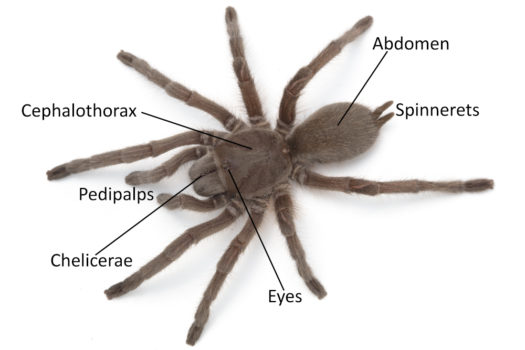What are spiders?
In Australia, spiders are a fact of life. However, despite coming into contact with them nearly every day, many of us know very little about them. Often the most basic facts about these animals are mixed up in myths and urban legends which generate fear and confusion. So, what really are spiders?
Spiders are:
- Invertebrates (animals without a backbone)
- Animals with an exoskeleton (a skeleton on the outside of their body)
- Predators (animals that capture other animals to eat)
- Venomous (not poisonous), though usually this venom has little effects on humans. Spiders in the family Uloboridae are the only truly non-venomous spiders and completely lack venom.
Spiders differ from humans and other more familiar animals in a number of ways. Much about their lives, from the way they walk, breathe and eat can seem alien at first. They do not even grow the way we do. Instead, they must shed their exoskeleton a number of times, with each stage of growth known as an instar. The hollow exoskeleton left behind after this process is often mistaken for a dead spider.
Australia is home to a large number of spider species. Around 3,000 species have been classified and many more remain either unclassified or remain undiscovered. Some estimates put the actual number of species living in Australia at around 10,000 species. While some species are live in remote parts of the country and are not often encountered, there are plenty that do live around us and are encountered on a regular basis.
Here are some of the most commonly encountered groups:
Orb-weaving Spiders (Family Araneidae)
This family includes spiders that build the classic orb or ‘wheel’ webs. Some species only build their webs at night and disappear into hiding during the daylight hours. Others species sit in their webs both day and night. These spiders catch flying insects that get caught in their webs, and are usually encountered outside in the garden rather than inside the home. They are quite timid and their bites are not dangerous.
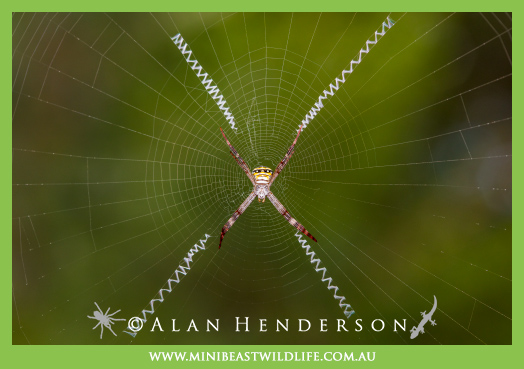
House Spiders (Family Desidae)
Most houses in Australia have some of these spiders as residents. They build lace-like woolly webs around window sills, holes in brickwork, on fences and in and around garden sheds. They capture both flying and crawling insects and are great pest controllers. Due to their black colouration they are often mistaken for funnel-webs, but they are not closely related and should not be feared.

White-tailed Spiders (Family Lamponidae)
White-tailed Spiders are extremely common and also the subject of an incredible degree of misinformation and myth. Their venom does not cause ulceration and re-occurring sores – they are considered quite harmless. Bites usually produce a small red mark and only localised pain. They are wandering hunters, preying upon other spiders. House spiders (above) are one of their most common targets.
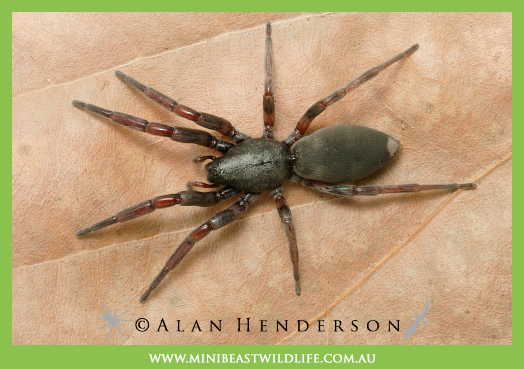
Jumping Spiders (Family Salticidae)
Jumping spiders are small curious and energetic hunters, considered harmless to humans. They walk, run and jump around and are usually most active during the day. There are a huge number of Australian species with a vast array of shapes, colours and patterns. They all have large eyes and good eyesight for stalking and leaping on their prey. Jumping spiders don’t build webs to catch food, but do use silk to make retreats to hide in, and for safety lines which they constantly trail behind them.
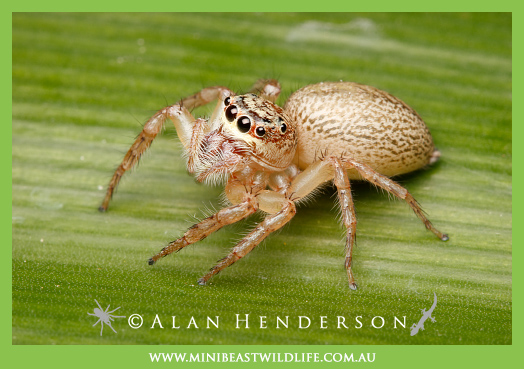
Huntsman Spiders (Family Sparassidae)
Huntsmen are found Australia wide with around 200 different species known. They are well known to most people and in any locality there may be several common species that differ in appearance. Many are large and relatively flat and spend the day hidden beneath objects, such as the bark of large trees. Others live in leafy retreats which are constructed using silk. Despite their size, huntsmen are timid spiders and are considered quite harmless. They prey upon a wide variety of small animals, mostly insects, which they catch through sheer speed and power. They do not build webs, but use silk to produce egg sacs, retreats and safety lines which they trail behind them when moving.
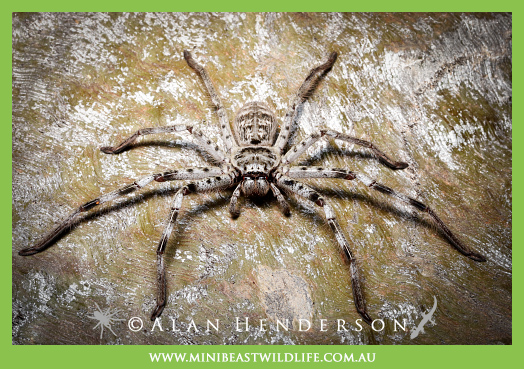
Trapdoor Spiders (Families Idiopidae and Nemesiidae)
There are many different species throughout Australia, and are found in a wide variety of habitats including suburban yards. They are often encountered when people are gardening or during the breeding season when wandering males accidentally end up inside our homes. They live underground in burrows, some with ‘trapdoor’ lids and some with open tops. They are very stocky spiders with a similar body shape to Funnel-webs – a feature which often prompts concern. In addition, some species can behave defensively and rear up exposing their fangs. Trapdoors though are generally brown rather than black, and more hairy than their highly venomous cousins. Despite their superficial similarity to Funnel-webs, trapdoors are relatively harmless with mild venom that may cause localised pain.

Australian Funnel-webs (Family Atracidae)
While there are many species in this group, the most infamous and most venomous is the Sydney Funnel-web (Atrax robustus). This is the only species of Funnel-web that whose bite has caused human fatalities, however, no fatalities have occurred since the development of the antivenom in 1980. Funnel-webs are generally glossy black spiders that live in burrows and crevices. Most live underground, but a few species live in holes in trees. While many in the group look practically identical to people not familiar with them, it is the chemicals in the venom of the Sydney Funnel-web that sets it apart from the others. The male has a concentration of particular proteins that are lethal to primates (including humans), yet have little effect on other mammal groups such as cats and dogs. They are most commonly encountered during the breeding season when males are wandering looking for mates. This is usually during summer and autumn.


